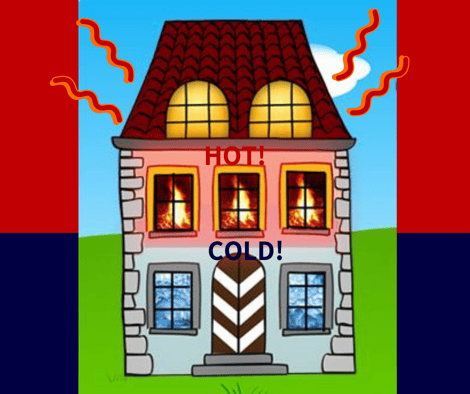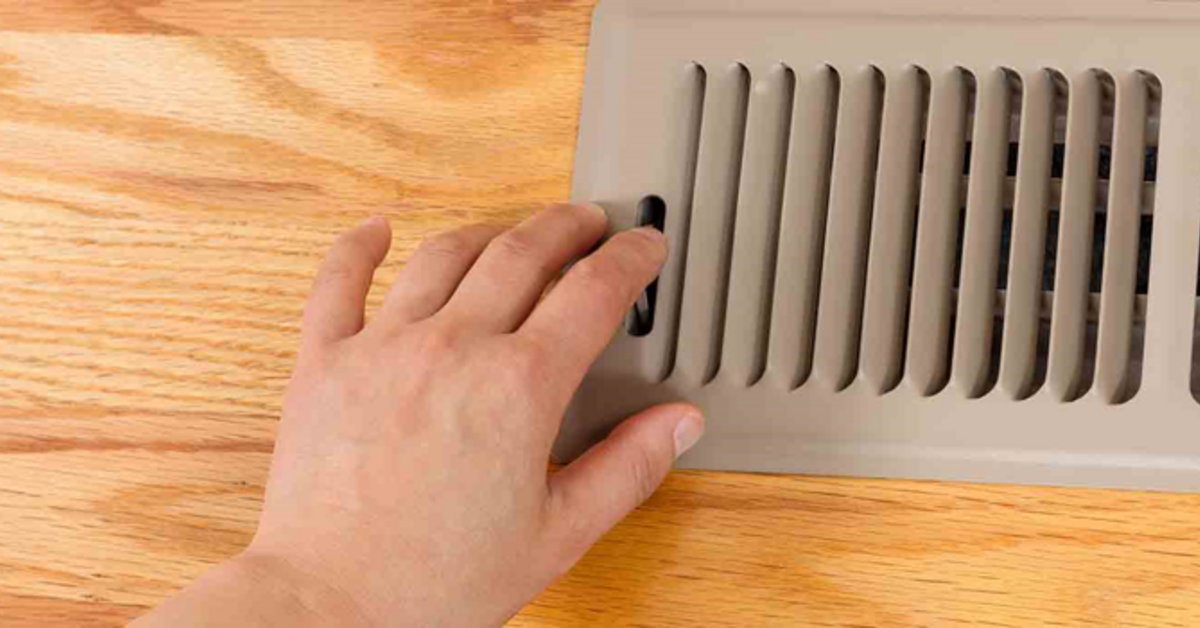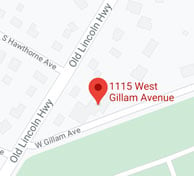If you live in a multi-floor property, you know the conundrum of trying to balance heating and cooling evenly across each level. Cool and comfortable on the first floor, but hot and unbearable upstairs. Sound familiar? Understanding why you may be experiencing this temperature imbalance will help you improve airflow. We are here to help you understand the causes of uneven temps and give you tips to increase airflow to your upper floors, because a balanced temperature is crucial to your home comfort.

Hot Air Rises, Cool Air Falls
Why does the temperature fluctuate so much from floor-to-floor? Is it as simple as the science you learned in school: hot air rises and cool air sinks? While this is the primary reason your upper floors are hotter than lower floors, it may not be the only reason. Many factors can turn your second and third floors into, what feels like, an oven.
Why is it so hot?
Over the course of the day, all the hot air in your home slowly rises to the top. Kitchen and front door/backdoor placement can also play a factor in how hot the upstairs floors get. If your kitchen is located near steps, cooking a lot in home may increase the temperature upstairs as the heated air from the appliances will rise.
Same goes for your doors leading outside. If the doors in your home are located near stairs, going in and out can draw in more hot air to rise. In the summer months, optioning to cook outside or preparing meals that take less time to cook are good options to limit kitchen heat. Closed doors and curtains can also help eliminate heat brought in from outside sources. If possible, try limiting foot traffic in and out doors near stairs leading to higher floors.
The amount of direct sunlight on all areas of the home may also be a contributing factor in the heat. Homes with darker materials and longer exposure will absorb more heat into the roof and paneling, affecting the temperature of the upper floors. Older systems and outdated ductwork may also be causing a temperature imbalance in your home.
What Can You Do To Improve Airflow?
There are many things you can do, as a homeowner, to improve the airflow to your upper floors. The following tips will help your upper floors provide you with as much comfort as the first floor!
Run AC in fan mode
Running your air conditioning unit in fan mode consistently will provide 24/7 ventilation and air circulation. Running fan mode is a lower energy cost than running the unit on cool and still effectively circulates air. Preventive maintenance and clean filters also help clean the air being recycled and improve the indoor air quality (IAQ).
Ceiling fans
Ceiling fans are also a great option for increasing airflow to the hotter areas of the home. While no cool air can be generated, air is spread wider and circulated through areas where air was not prevalent. This is another low-cost energy solution to airflow problems.
Clear vents/close vents
Clearing and closing vents can help you section off and prioritize portions of your home without having a zoned cooling system. If possible, shift furniture to make sure the vents have clear space to operate for the maximum amount of airflow. Closing vents on lower floors where it may be chilly or in rooms with low foot traffic can also help the unit and ductwork focus on the hotter portions of the home. This will give you the feeling of a zoned cooling system without extra cost.

Increase number of vents/size of returns
Increasing the size of your return vents and making sure they aren't covered with any objects will help introduce more air to your system to be cooled and circulated. This will help keep a more consistent flow through the vents and ductwork.
If return space is limited, increasing the number of vents will also provide another avenue for cooling. This provides more vents for cool air to flow and hot air to be removed.
Zoned ductless systems
Ductless systems provide a great option for homeowners struggling with space limitation and upper floor comfort. These systems are more energy efficient and don't have the issue of air escaping through loose ductwork. The zoning portion of these systems also helps you focus on individual rooms and create your own cooling environment for different areas of the home. Having zones for separate floors can help improve your temperature balance and reduce energy usage in total.
Preventive maintenance
No matter the topic, this is a tip that is always included! Annual tune-ups and insulating your home before the weather hits are two preventive measures you can take to improve the comfort of your space. Technicians and specialists are happy to answer any questions you have about specific areas in your home and help provide maximum comfort for you and your home.
If you live in the Delaware Valley/Greater Philadelphia area and would like to find comfort within your home, visit our website or give us a call at 215 - 245 - 3200 to learn more.




